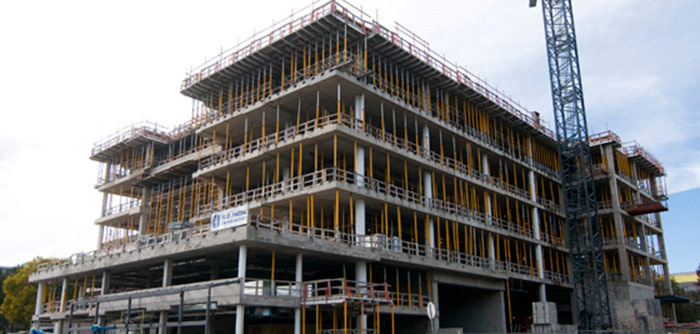
It has been 9 weeks since the demonetization event took
place. India’s real estate market is learning to deal with its after effects. As expected, Real estate is one of the worst-hit sectors as investing unaccounted wealth is extensively prevalent in this sector. While the panic is prevalent among developers and other market participants, together with implementation of the Real Estate Regulatory Act, this move will cleanse the sector. These regulations will assist in further cooling off prices, improving the sector’s image and attract more investments.
Residential real estate: Residential transaction volume has dropped considerably. Our conversation with the officials at the sub-registrar’s office in Mumbai reveals that registration of sale and purchase of properties has dropped 70%. A large part of it is due to the uncertainty around how much should prices correct by. While the demand from users and investors is steady, the uncertainty around prices and interest rates have pushed the transactions further behind.
The Primary sales segment in major cities like Mumbai, NCR, Bangalore, Chennai and Hyderabad is largely dominated by home finance. Hence, this part of the real estate market is expected to recover faster. Home sales in tier-2 and 3 cities are witnessing a bigger slowdown. In the primary segment, the affordable housing segment is expected to recover faster. This segment is largely influenced by first time home buyers. The secondary or resale market will be certainly impacted, given the high dependence on cash for these segments.
While a slowdown in the number of transactions will reduce the prices, the actual registered value of the transactions will go up as considerations will not involve any cash component.
Home loan rates: Most Banks and NBFC’s have seen a fall of 20bps on home loan rates given excess cash expected in the banking system. A 50 basis point REPO rate cut was widely expected by the market in the December RBI meeting. However, RBI Governor Urijit Patel on its December 7 meeting did not reduce the REPO rates. The RBI intends to keep the inflation rate at 5%. This year Crude oil prices have increased 40% and this could lead to inflation. US Fed also expected to raise interest rate over the next 2 years. Hence, with no major rate, but from RBI, no major reduction in home loan expected in the next 6 months. A reduction in home loan rates by 1%-1.5% could play a role in spurring up demand.
If one has a home loan of Rs 20 lakh at 9.5% for 20 Years, the EMI would work to Rs 20,884 per month; Every 0.25% cut in interest rates will reduce the EMI by Rs 300 per month.
However, all banks will reduce the tenure of the loan rather than reduce EMI’s. Impact of reduction of interest rates is depicted in the following chart below for Rs 20 lakh loan for 20 year tenure.
Commercial and IT: The demand for Commercial and IT has been robust during 2016. Strengthening business confidence, stabilizing global concerns and an optimistic economic outlook are likely to infuse confidence into occupiers. Office absorption is expected to close to be 30 million sqft for 2016. Sudden decline in money supply and simultaneous increase in bank deposits is going to adversely impact consumption in the economy in the short term. The demand for commercial real estate, however, remains robust post demonetization. 2016 has seen some large commercial transactions. 2017-2018 will continue to see robust demand for commercial and IT space. H1 2017 will see large Commercial and IT lease and sale transactions that are currently under negotiations.
Land: There have been little or no transactions in land in the last 45 days. The primary reason for this is that Cash dominated the land transactions; Further, the focus of landlords and Developers has largely been about sorting existing issues related to reducing losses on cash conversion post demonetization announcement. There was also the looming concern of Income Tax scrutiny on these transactions. We expect the same trend to continue one more quarter.
Developers and new launches: Developers have been facing challenges due to lackluster demand since last 3 years. The number of new launches in 2016 are already down 54% since last year. We expect Developers to further slowdown launches in 2017. Postponing of purchases by buyers and investors will further add to the inventory levels of the Developer.
Due to the slowdown in sales, the debt levels of few Developers have reached its peak and are going through restructuring of payment terms with banks. Even before de-monetization, there were several Developers who had started defaulting on bank loans. Small and mid-size Developers are increasingly looking at Joint Development agreements and Joint ventures with larger Developers as sales volume and availability of bank finance has slowed down considerably. Larger Developers are benefiting from lucrative deals being offered to them. International Private Equity funds and NBFCs are partnering with large developers to fund such transactions for takeover / joint venture with smaller Developers. Customers are increasingly looking at the size of the Developer and ability to deliver projects while taking the purchase decision.
Retail: Cash transactions dominate Indian retail trade. November saw a reduction in the sales across all retail channels. However, the impact is felt more by the unorganised retailing segment, rather than the organised retailers. Some sectors like jewellery and the luxury segment have been impacted more than others and will take longer to revive. Demonetization has resulted in low footfalls in shopping malls in November; however, with the movement of currency starting in December using alternate payment arrangements, big discounts offered by retailers, holiday season in December, and release of big budget movies like Dangal, the footfalls are back in the malls. In the medium-to-long run, domestic consumption will be stable owing to India’s strong economic base and favorable demographics. Rentals at retail level in Tier 1 cities are stabilized. However, Tier-2 cities capital value and rentals for retail properties will see downward pressure.
Stock market reaction: Since budget 2016, the NIFTY Realty Index had gone up by 52.1%, showing a big recovery over last 5 years. Since demonetization, the Realty Index has fallen 20% showing concerns of Investors on falling real estate prices. Since demonetization, Phoenix Mills has gained 1%, Puravankara and Omaxe have lost 4% and 5% respectively. DLF and HDIL have lost 27% while Kolte Patil has lost 33% wiping out all gains since beginning of the year.
Economic Stimulus: The real estate sector contributes approximately 7.5% of the GDP directly and through allied activities. Hence, given the expected collection of Rs 14 lakh crores from demonetization, the Finance Ministry will be looking at various economic stimulus alternatives to boost the economy. Big budget Metro projects like Mumbai Metro Phase 2 and 3, NCR metro extension to Greater Noida will give a boost to affordable housing projects.
Budget 2016 has the following proposals for the real estate sector:
- Exemption from dividend distribution tax paid by a special purpose vehicle to a Real Estate Investment Trust (‘REIT’);
- 100% deduction on profits for building affordable housing project, in line with the Government objective of ‘Housing for all by 2022’;
- Clarity on Section 50C that the effective date for stamp duty value will be agreement value.
There are high expectations from the Budget in the Real Estate Sector in 2017.
Increase the interest benefit on home loans under Section 24 of the Income Tax from the present Rs.1.50 Lacs to Rs.3.00 Lacs
Single window clearance for faster project approvals
Incentives for Slum development schemes
Simplify NRI taxation relating to TDS on rents and sale
Lower indirect taxes on sale of property under GST
Tax concessions on house insurance premiums paid by homeowners
Additional allocation for infrastructure development in peripheral areas of metros
Incentives to boost green development and consumption of sustainable real estate
With Real Estate Regulatory Bill, the Benami Transactions Bill, the GST, and a possible economic stimulus the real users of real estate will be back in the market. However, this will take time and we can expect recovery by Quarter 3 of 2017.





















